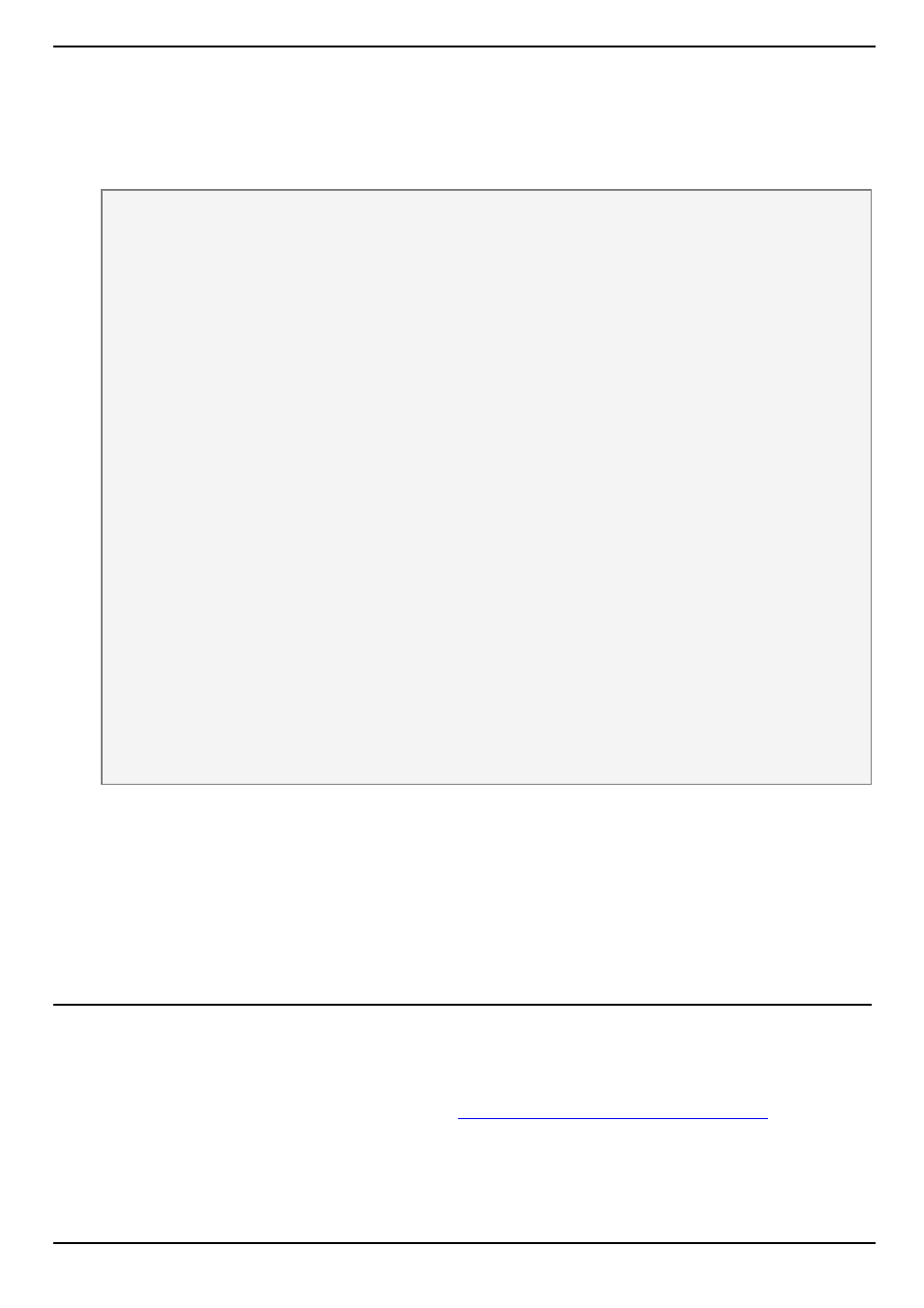Isfolderoverlapchildren(), Isfolderoverlapchildren – MiG InfoCom MiG Calendar JavaBeans User Manual
Page 37

(continued from last page)
Property: The specification for the levels that correspond to the category level. The main row, which doesn't represent a
category but actually the collection of subrows that represents the categories, is level 0. The root category is level 1 and it's
direct children level 2 and so on.
Example 1:
Level 0 (main row)
Personnel (Level 1)
Chris (Level 2)
Susan (Level 2)
Aircraft (Level 1)
SE001 (Level 2)
SE002 (Level 2)
SE002 (Level 2)
<pre>
Example 2:
<pre>
| Other, top header...
________________|_________________
| | | |
| P | L | Work |
| e | i | |
| r | s |=======|
| s | a | Home |
| o | | |
| n |===|=======| The date area
| n | | |
| e | M | Work |
| l | a |=======|
| | r | |
| | k | Home |
________________|_________________
When the columns is level 1, 2 and 3. The whole row is level 0.
This means that a level will get the same attributes normally. It may be background, foreground, color and such things and
is outlined in the
com.miginfocom.calendar.header.DefaultSubRowLevel
instances in the array. This also
includes mouse over and mouse pressed effects.
Parameters:
rows
- The new rows.
null
is same as empty array.
isFolderOverlapChildren
public boolean isFolderOverlapChildren()
Property: If the folder category rows, which contains other rows, should get it's secondary dimension's (along the header)
size stretched over all its sub rows bounds. Example 2 in
setHeaderLevels(DefaultSubRowLevel[])
shows how this
might look. Note that this is only in the secondary dimension.
Returns:
Page 37 of 196
com.miginfocom.beans.CategoryHeaderBean